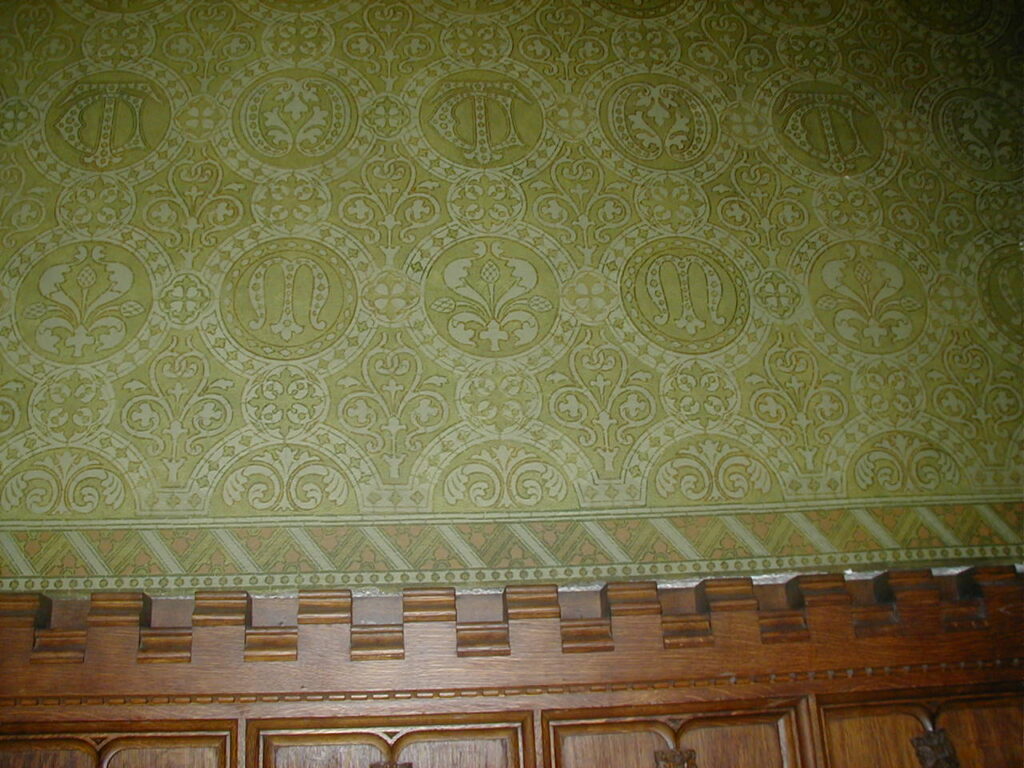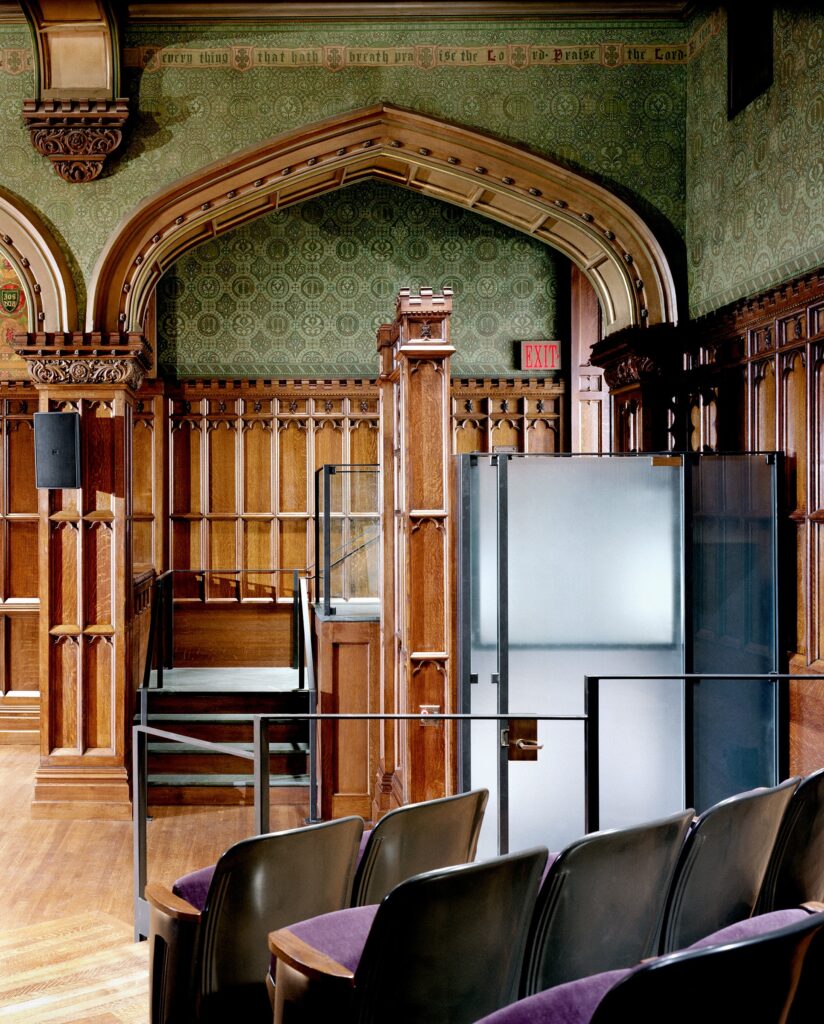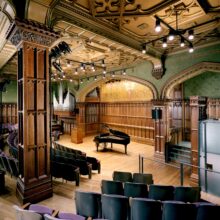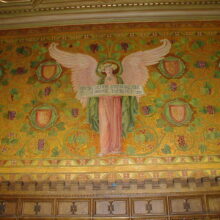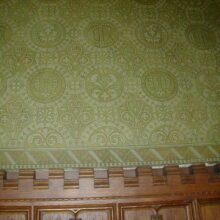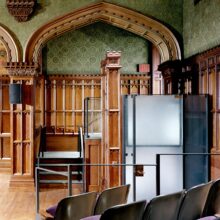Milbank Chapel
After 100 years in service, a comprehensive restoration transformed the chapel into a 250-seat, ADA-compliant auditorium and performance venue.
Columbia University’s Milbank Chapel was designed by William Potter in 1897, with an intact, High Victorian style interior. The original decoration was influenced by the British Arts-and-Crafts Movement, and included rare surviving wall stenciling attributed to the Tiffany Glass & Decorating Company (1892-1902). The unsigned mural on the stage resembles tapestry design by William Morris, adding to its historical significance.
A wheel-chair lift and state-of-the-art technology, including video projection equipment, a high quality lighting and audio system, and an HVAC system were installed. EverGreene’s engagement comprised of the protection and conservation of the historically important interior decoration, including plasterwork, stenciling, decorative painting, and a mural amidst the installation of modern technology and accessibility features.
EverGreene restoration specialists repaired and stabilized the water-damaged plaster substrate. Crumbling plaster was consolidated, cracks and voids were repaired, and loose elements were secured by mechanical means. Elaborate stenciling required touching up and replicating in areas that had suffered water damage or undergone plaster repair. Acrylic paints and glazes were specially created to match the colors and sheen of the stenciling. After repairing the coffered tracery ceiling and cornices, the ceiling was painted and glazed to match the original colors, existing gilding in the tracery was touched-up, and the capitals were wood-grained to match the historic finish.
The mural was conserved with minimal intervention. After a series of testing, conservators carefully removed dust and grime, dry cleaned the surface with brushes and vulcanized rubber sponges, and applied an aqueous spot cleaning treatment. Nails, staples, and pushpins were removed, disturbed canvas weave was trimmed and placed it into its original position, and holes were filled with a synthetic emulsion. Areas of paint loss were filled with reversible restoration paints over an isolating layer and areas of flaking paint were stabilized with a thin layer of a synthetic adhesive which produced no distinguishable difference in sheen. The Gothic limestone tracery around the stained-glass windows was cleaned and re-grouted. Flaking and crumbling stone was consolidated with adhesives. EverGreene sculptor Penko Platikonov carved a replacement stone Dutchman element.



